A real mixed bag for you today.
Ever since I published some train pictures a long while ago, I’ve lost count of the times the below three have been mailed in.
So I thought I’d publish them and get them out of the way!
Beautiful aren’t they?
Next stop is one of my recent posts. It relates to this one here.
A fireless engine was new to me – but thankfully I got some mails on it:
“The fireless steam engines, often laughingly called teapots or tea kettles, were used in many places where an open flame in a traditional firebox would be dangerous. An example that immediately comes to mind is that Eastman Kodak had several at their chemical plant in Rochester NY. Porter built many of them.
Ed”
“We have one of these “fireless cookers” at Steamtown, not running of course. They were most common at one time at industrial sites. PP&LElectric Co. had one. On a similar vein, I know of two area examples of old steam locomotives being attached to industries to supply their steam during emergencies and during plant boiler replacement projects. The Lackawanna and the Reading are two that I know did that. It was a small source of revenue from old engines that were not very road worthy in the late days of steam.
Thought the “troops” might be interested. Thanks for including me on your mailing list. Some really neat stuff out there and I enjoy it immensely.
Sincerely,
Don”
“Alastair –
If you haven’t heard already, that 0-4-0 loco is referred to in the States as a ‘Fireless Cooker’… they were used in alot of factories that dealt with flamable/explosive material… amunition plants (primarily).
Dave”
“These engines were usually employed in areas such as munitions and chemical plants where an open fire could prove dangerous. Also, there were engines which ran on compressed air – same principle.
cheers
Bob”
And now on to another friend in need, as so many of helped out Wayne last time:
“Hi Alastair thanks for all the great info you send out to all of us. I for one really appreciate all the ideas. I am an ex pat living in the US. I belong to a local HO Modular club but at home model N scale.
I get back to the UK every few years but not often enough.
The reason for my message today is to ask for advice or information. My 91 year old dad and 88 year old mum are still alive and well living in Southern CA. For a hobby they enjoy making scale model buildings. The scale changes and actually they are pretty good at it. They built a replica of the church they were married in Killamarsh Derbyshire and Conisbrough Castle near Doncaster where my dad lived and in who’s ruins he played as a child. They were both employees of British Rail before and after WWII and my dad served in the RAF during that war.
What they would like to do is build a model of an olde British pub with a thatched roof. In talking to him this weekend he said he wasn’t sure about making the thatch and also getting ideas for a pub design. He has emailed pubs in the UK and asked for photos of pubs to get ideas. So far he has not got a whole lot of response.
What I am looking for is links to instructions etc for making thatch for modeling and any pictures of old pubs etc. I thought as a modeler in the UK you might be able to help.
Thanks again for all you do…..
John Dye
Yuma, AZ USA”
Any ideas? Please do post a comment below.
“Hi Al,
Thanks for the emails. They are great and very informative.
I have attached a photo of my first attempt at a layout. Let me know what you think!
Regards,
Graham Alexander.”
Hope you’ve enjoyed reading this installment as much as I have writing it.
Love all your comments (especially about the ‘ebay cheat sheet‘). Please keep ’em coming.
And if you want to get started, the Beginner’s Guide is here.
Best
Al
PS The ‘broken down old shak’ in the print out scenery was really popular, so my boy has done another:
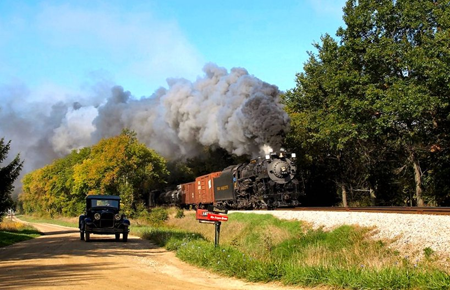
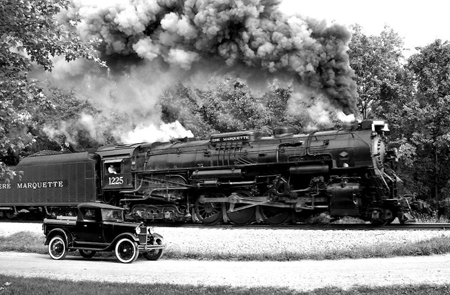
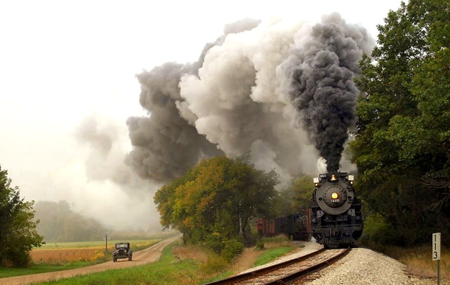
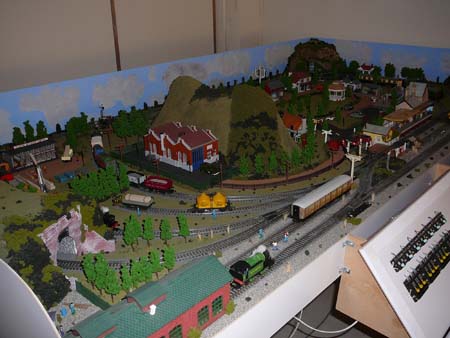
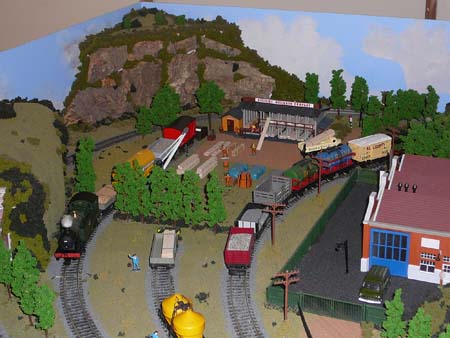
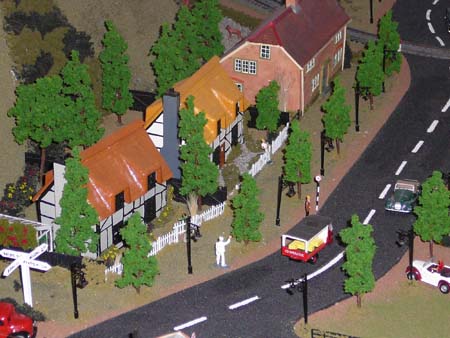
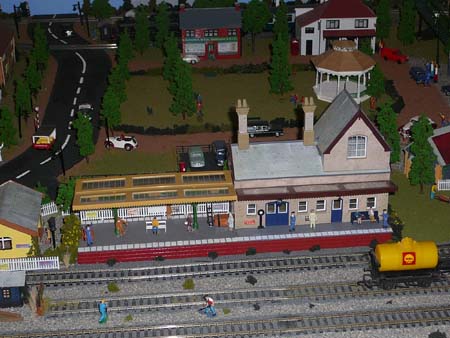
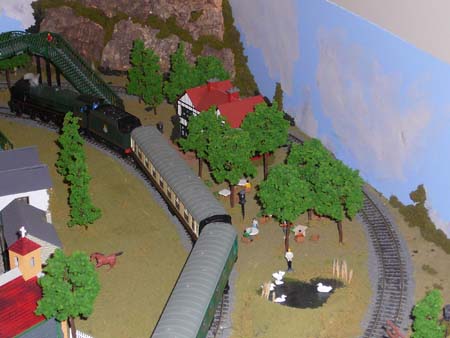
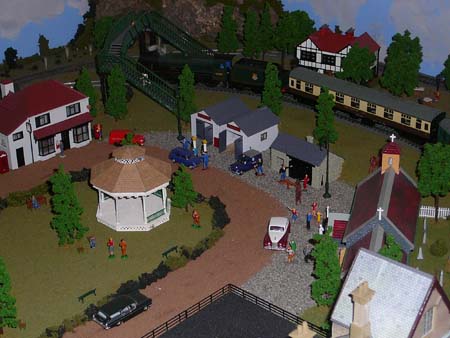

I recall reading a modeling book years ago that was published in the Uk.The source of thatch was Asian human hair,hope that helps.
Most things in model railroading are scaled down versions of their full sized prototype allele. If you want to thatch a roof I suggest you investigate how thatching is done and scale the process down to model size. You may have to dry some long grass or dye some plastic/synthetic string for the thatching. [Our local hardware store uses a plastic string to tie down large items for transport home. Being the scavenger I am I have quite a bundle looking for something to do with it. I think it could be cut down and split to something in scale to thatching.] You could also try jute or twine.
Don
John,
In response to your request for an idea for a thatched roof. You might try the “Field Grass” from Woodland Scenics. It is tall grass used for layouts around water. It might work for your parents building.
Also, there is a site called Fiddlers Green “www. Fiddlersgreen.net” that has quite a few buildings made of cardstock for download which are very good. I am currently making an English village for my n scale layout. I’m sure they will find some good ideas and pictures of english pubs there.
Hope this helps.
Don
For John Dye,
Here’s a thatch-roof technique that could probably adapted to any scale, as long as the faux fur were the right length.
http://glorioustwelfth.blogspot.com/2011/03/how-to-make-really-authentic-dollhouse.html
Also, check out how real thatched roofs are made:
http://www.youtube.com/watch?v=1FMkKoHzQrY&feature=related
Graham,
How do you model the rockface in the 2nd photo? I really like the effect and would love to learn how to make it.
Thanks for sharing the layout. It’s great and gives me several ideas to adopt for my layout.
Enjoyed hearing about the other tea kettles. If anyone has photos, I’d like to add them to my collection. When I was 16 the one at NCR was a joy to watch.
–Ben bzalewski1@udayton.edu
For a first try I think it’s beautiful, you did a great job,I hope mine turns out looking that good. as far as thatheing goes try using paint brush bristles, cut and tied they should look quite good.
For John Dye,
You might have heard of the Pendon Museum near Oxford, John (www.pendonmuseum.com)
This is modelling superb and is some of the best you will see anywhere. They have one layout of the Vale of White Horse which is the area in which the museum is situated and the modelling is that of the 1920`s when most buildings in the area were thatched and a lot are still to this day. They have a shop and I can recommend one of their books which is “Cottage Modelling for Pendon”. I have this book and have been to the museum several times. Have a look around the website and I think you will be impressed. The book tells you everything you need to know and particularly how they do their thatching. One of their pubs scaled down from the original real pub is actually obtainable as a kit. Hope this is helpful and you are successful. I have used a lot of the books methods of construction in my layout and next time you visit England make sure you pay a visit to this museum you wont be dissappointed!
SOMETIMES A SMALL LAYOUT IS IS BETTER THAN A BIG ONE
Al, thanks for all of these emails. I look forward to them and learn so much from everyone! Graham, I like your layout…looks awesome.
Graham, what is the gauge – HO? How large is your layout?
Wonderful shots!! I believe 1st and 2nd shots might be the great old 4-6-2 s light wt. Pacifics,although I’m hazy on the 2nd picture.
Great photos, I would love to see more.
great pic’s of old trains,I live in wyoming and they bring in a old train every year over night i’ll try and get some pic’s and send them to you.
I run Lionel 0 gauge and am looking at a landscape wall mural for a great looking background such as mountains, clouds/ski, forest but am concerned about the appearance scale vs. the trains. Has anyone found a good wall mural that would work? Thanks, Rod, USA
Those are fantastic photos of the steam engine and car. I would love to see more. I would like to have them also. Do you know where someone could get prints, to buy.
Iv been workin on my garden railway and was wondering if you guys had any tip that could help
Well if you search for lewislinerailway you will find my garden railway
This is a great layout especially if this is your first one. Congratulations, Arent the cars on the wrong side of the road? 🙂
Great first attempt , with lots of great detail .
Udie, The engine in the pictures of the train and car is the Pere Marquette 1225, living in Owosso, Michigan. This engine was used for the making of the Polar Express movie. The people from the sound company were on site to record all the sounds of the engine for the film. Also the number of the engine, 1225, is the actual number originally assigned to it. (1225, Christmas).
Also Google Pere Marquette 1225, to see a LOT more pictures and videos and other info on this engine!
Judging from the condition of the 1929 Ford Model A truck, this photo was taken before I was born; but, beginning in about 1940 and continuing throughout The War, I boarded the Michigan Central pullman sleeper in Detroit, The Arsenal of Democracy, and changed to the Pere Marquette in Grand Rapids, Michigan, for the slow coach trip to Traverse City, Michigan, which my parents deemed safe from the Axis air threat to The Motor City, where even the Rolls-Royce aircraft engine was built. If I am not mistaken, the Pere Marquette was the prototype (A scale) for the Polar Express.
Alister, forgive the somewhat grand title, but my name is Douglas and I live in Cornwall-what more need I say?
Regarding “Thatch”, my initial response to what materials are there is try using a natural bristle paint brush for the “reeds2. I imagine that you would only need a thinnish layer to conceal the main roof material.
Fireless engines were used a lot in areas of fire risk or explosion and I believe that there was even a trial of one for the London Underground that I seem to remember was unsuccessful due to the limited running range.
I enjoy the blogs and pictures very much, so keep them rolling!!
Cheers, Douglas
Try google UK , thatched pubs, most have a web site with photo’s.
ie the cott at Dartington devon UK .If you want e mail me and I will look out some more.
GP.
Need some advice from a more experienced trainer. I have recently built a layout in a friend office. This is on a floating shelf, 6 1/2 ft high on the walls. I ran supply wire around entire track for the HO scale train and it runs great. I am having a problem with the accessory wiring. I have 2 wires (1black,1white) ran around the shelf for this. My problem comes with hooking up the lights. Most are the small lightpost streetlamp type. They are located on 4 different “scenes” arpunt the shelf. I connected the wires white to white, and black to black, and hook to my controller and cannot get to work. Can someone e-mail me with advice? Not sure where problem is since this makes a ladder type hookup, and should not have to tie ends of black & white together.
Graham:
That is a wonderful looking layout. I am still working on my layout and who knows when it will be done.
Regarding thatched roofs, would broom straw be too thick? Would depend on the scale I suppose.
I am working on a n scale rail road on a 28 x 80 platform. I need help with wiring and a idea fir fencing for my n scale cows. Please help. Thanks paul
I would like to build a waterfall off a mountain range . Are there any must dos or do nots involved in making a waterfall?
I thought Graham Alexander’s first layout was fantastic.
The only problem is that all of the cars are driving on the wrong side of the road and going the wrong way. 🙂
Mike from Watkins Glen, NY
USA
John Dye…have your parents try hemp rope for the thatched roofing. You just unravel it and cut in short pieces glued to thin cardboard strips and over lap them. I would guess that you could change the color easily too. I’ve used it as brush on dioramas and it’s great for many other uses.
Geoff in Dallas
Wiring your street lamps like a ladder (wired in parallel) is correct. Solving problems like this can be difficult and time consuming.
First, is your controller working correctly, and does it put out the right voltage? Hook up one street light to it and test it. If that works, then look for a broken wire somewhere along the line.
Next, is there a short or break somewhere in the line? Are all wires hooked up properly? If a visual inspection says they are good, then try to narrow down the faulty area.
Try disconnecting the feed wires to the second half of the layout. If the first half still doesn’t work, try disconnecting feed wires, halving the string again. Keep halving the system until you locate and fix the problem. If the first half works, then reconnect the second half, and break the feeders half way down the second half.
By halving the problem area each time, you should find the problem fairly quickly.
Good luck,
Carl in Kansas
To the gentleman from Dayton. My Dad was with NCR for 40 years. I worked there in the summer between my 2nd and 3rd year of college. The first year in the outside dept. One day 5 of us were unloading a coal car at the foundry. We took the “Rubicon” to drag the other steamless cooker back as it had run dry. He let me run the engine for a spell. A MAJOR thrill. I was sadden to see NCR basically gone, thank goodness they saved the Rubicon at Heritage Park !!
Warren, St Pete, Florida
If they were not properly identified, those three photos are not old. That is the Pere Marquette Berkshire # 1225 (The actual Hollywood Polar Express) operated by the Steam Railroading Institute in Owosso Michigan. Their place is just up the road (60 miles up the road) from the Chi-Town Union Station. The photos with the old car were taken on the country roads just North of Owosso. I’m guessing the date would have been about 2008.
I’ve lived in Dayton for 33 years and never heard of the NCR engine. What a shame! I’ll be off to take a look shortly. Thanks to everyone who shares their knowledge and experiences with the rest of us.
For a first attempt that is very impressive ……. not keen on showing my poor efforts now! Well done!
regards
Dirty Dave
Hi:
In reply to model a thatch roof. You might consider very fine steel wool that you can buy in a hardware that looks very much like thatch. If you unroll the pads in the package you can get a flat piece to bend and cut as necessary.
Happy modeling!
Ray Pittsburgh, Pa.
Great work, happy rail modeling. Jim Blairsville, Pa
I have and HO set up
John- I was beaten to the “Pendon” model railway suggestion. Their display and the Cottage modeling book are excellent! A must see any time you are in England (although only open on weekends, unfortunately). I have another book that has a lot of information about modeling thatched roofs. I’m not home right now but Allen Downes published a book or 2 on modeling cottages and I think it’s one of those. Good luck- sounds like a great project!
Tony. Kitty Hawk NC
The trains are great apart from the pollution they pour out of their funnels.
Hello, My Grandfather Roy L. Waggoner worked in the shop called Radnor Yard in Nashville, TN. He lost one of his eyes from a flying piece of a cotter key. He passed away in the early 60’s. The Radnor Yard is still there with lots of action. I have an N gauge layout that I built a few years ago and have been thinking about building a HO layout. This DCC system seems so complicated, I am reading and studying about wiring and all the expensive stull I will need. I still have a car project that has been around for about 23 years and still not done, I know I should finish it before I start something new, that’s always my problem finishing.
Mark W…
If the streetlights have a diode to step down the voltage, try just switching the wires at the power. I just recently learned that myself . Power has to be coming to the light(s) via the diode wire.
I would like to suggest buying some “chip brushes” for making a thatched roof. They are a very inexpensive paint brush and have a straw colored bristle. I buy them at a local Harbor Freight store in boxes of 36. You can get a box when on sale for about $10 . They would be fairly scale accurate when cut and glued in bundles to look like real thatching.
To Paul E Bolton, I made N scale fencing for cattle using electric motor armature wire stretched on a three foot board like guitar strings only very close together, of course. Four wires. I marked the board to space the posts, then glued cut down wood ties to the wire with dabs of epoxy on each wire at the marks. Once completely set I cut the section off the board and installed it in drilled holes in the layout using scenic glue. Oh, yes, I painted and weathered it first! Looks just like a barbed wire fence! Greg From Kansas
The other “Steve Baker” on this list suggested “Asian Human Hair” for thatch. Seems like an odd choice!
Anyway – what THIS “Steve Baker” says is:
When I made a Medieval village for tabletop gaming – I used Teddybear fur fabric, – you can glue it onto the roof of the building – brush it until it’s how you like it – trim the edges – then fix it with the usual mix of PVA glue and water…or matt ModPodge – or even just a heavy dose of hairspray.
You can also paint it to add tint and variation.